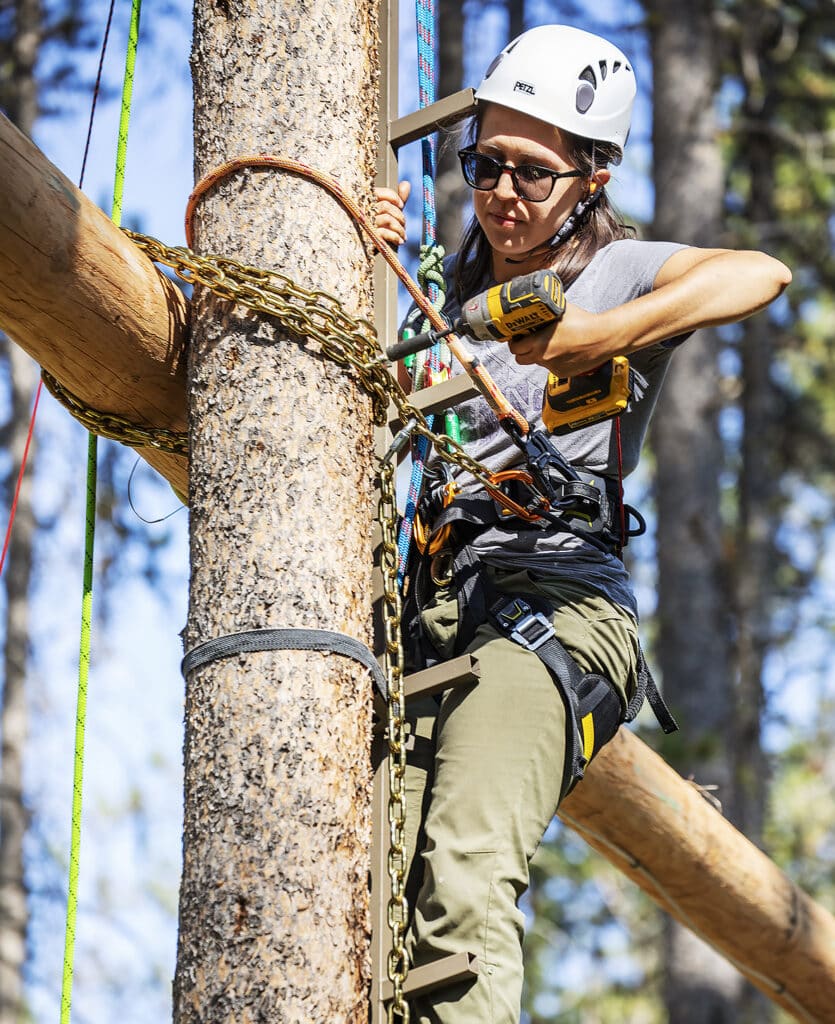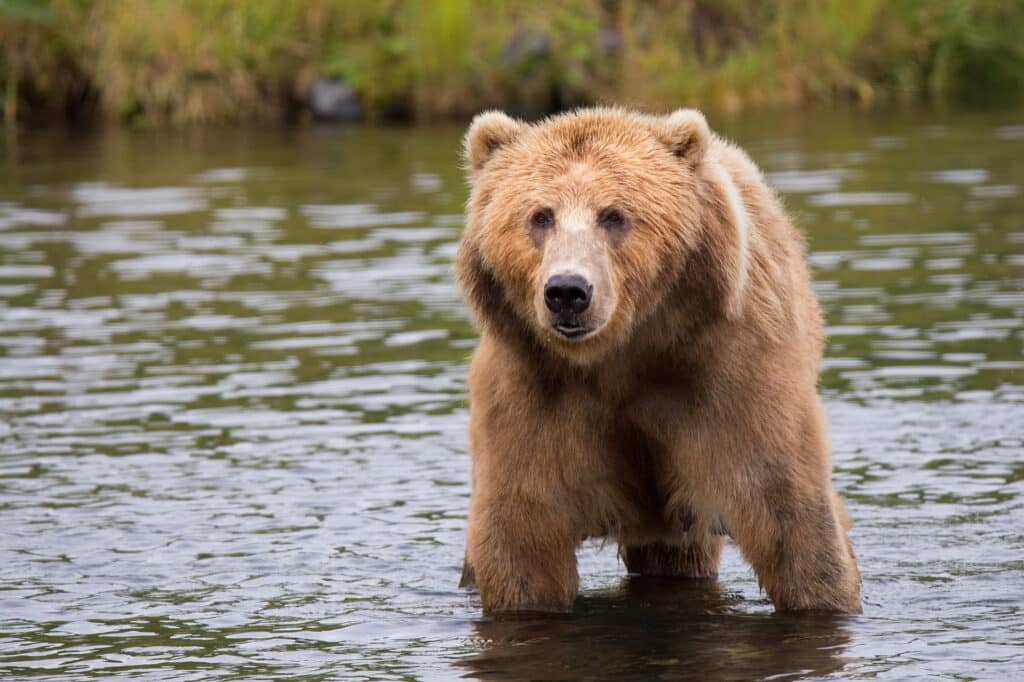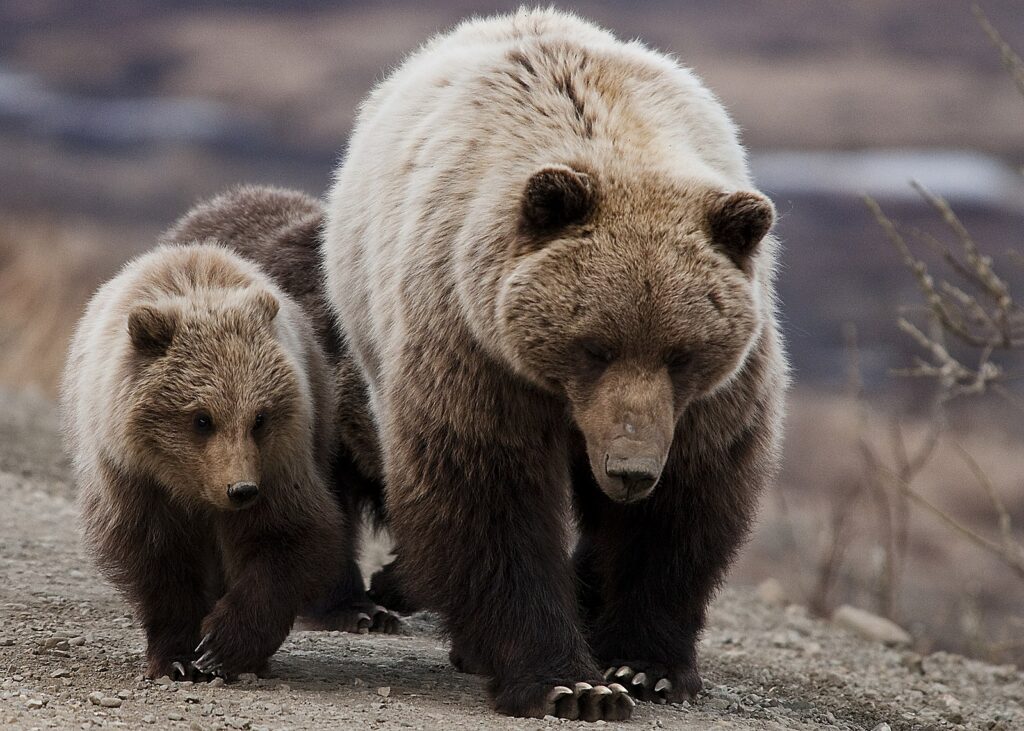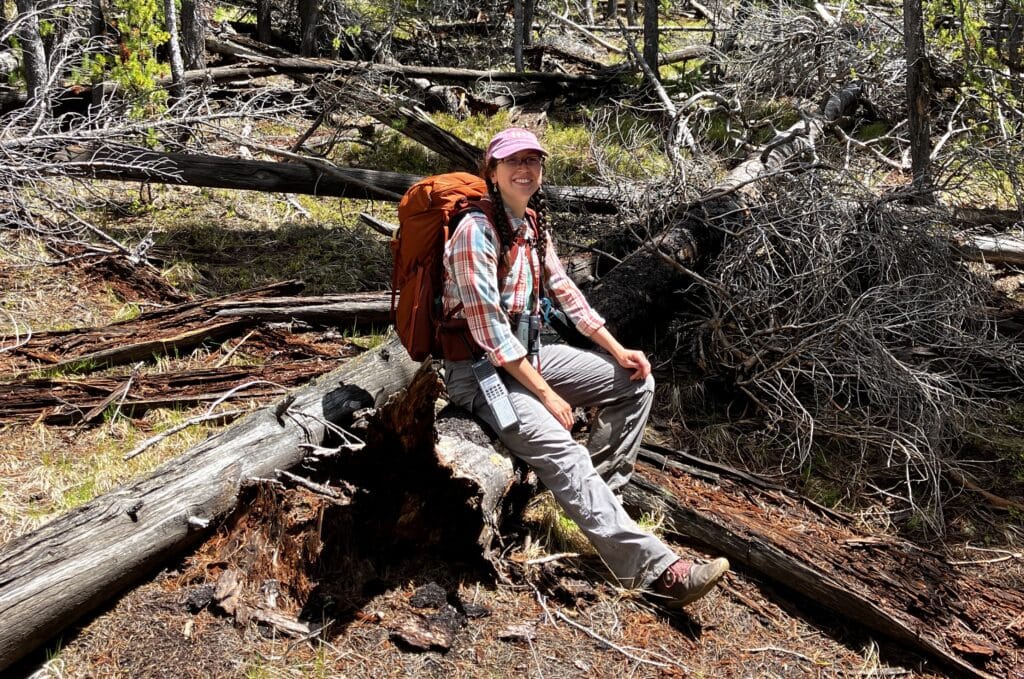Helping Ranchers Live Alongside Grizzlies
With the heavy chain slung over her shoulder, Stephanie Barron climbed up the makeshift ladder along the tree trunk. Steel links clattered as she wrapped them around the bear pole, fastened horizontally 20 ft. above ground and 200 ft. from the campsite, to hang her food. Bears and other predators can smell food from miles away, so she always took precautions while researching Montana’s large carnivores, which are increasingly coming into conflict with ranchers. As one of WCN’s Rising Wildlife Leaders, Stephanie has received a scholarship to advance her studies; she is working with the Confederated Salish Kootenai Tribe to find a path to human-carnivore coexistence.
Although she collaborates with Montana’s Indigenous groups in their traditional homelands, Stephanie is a descendant of the Chiricahua Apache people of Arizona and Mexico. As a child, her neighborhood park was the closest that Stephanie could get to nature. She dreamed of becoming a wildlife biologist, even as her parents and teachers urged her to pursue a more lucrative career. Conservation called to Stephanie, and today she is becoming an important leader in a state where livestock ranches border wild landscapes inhabited by large carnivores. This year, WCN’s Scholarship Program expanded to include members of North American tribal communities, and Stephanie is part of this cohort. She is completing a master’s in Environmental Science at the University of Montana, with a focus on using traditional ecological knowledge to develop educational materials about carnivore coexistence for the next generation of Indigenous and non-Indigenous ranchers.
Grizzly bears are Montana’s largest predators, with about 2,000 living in the state. In addition to human development, unprecedented environmental pressures stemming from climate change have shrunk historic grizzly habitat, causing territorial overcrowding and the expansion of less dominant bears into new areas of Montana in search of food. This leads to more conflict with ranchers, whose livestock can be threatened, but these encounters are often the result of misunderstandings and accidents. Stephanie knows that there are many ways to help Montanans coexist with grizzlies.
To change and prevent negative perceptions toward bears and other carnivores, Stephanie creates educational materials for young people who are likely to become ranchers living alongside these carnivores. The materials, based on traditional knowledge, help them foster an open mind toward carnivores and their role in a healthy ecosystem. When she’s not studying, Stephanie also observes carnivore behavior in the field. With the data she collects, she collaborates with other tribal biologists and USDA specialists to develop a culturally-representative curriculum that provides these future ranchers with the knowledge and tools to successfully coexist with large carnivores. This includes learning to install deterrents like electric fences and bear-proof garbage bins. She also interviewed regional carnivore specialists, who themselves had interviewed ranchers who experienced bear conflict, to better understand what causes these incidents.
With critical support from her WCN scholarship, Stephanie will empower young people passionate about wildlife, just as she was, to have a long-term role in local conservation. Her curriculum aims to reduce conflict between grizzlies and Montana’s ranchers, and once completed, it can be shared with additional Indigenous and non-Indigenous communities elsewhere.








